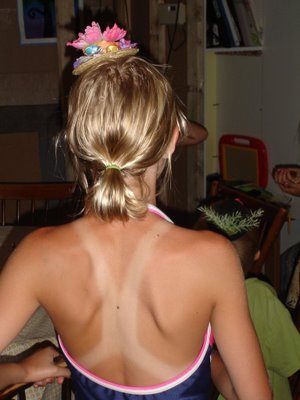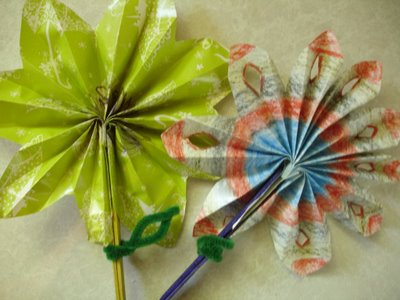
On a recent trip to Virginia the kids and I took a simple felting class. The last time the art club attempted felting it wasn't a great success -- pretty messy, the felting was slow going, and I didn't have a good grasp of the material. A local community art center in Orange, Virginia provided the space for a private lesson with a local felter. It was an excellent opportunity to improve my own skills and step back and watch an expert work with my own children while I took notes. I got a lot of specific felting tips from the class, but mostly I was reminded about how important it is to take time to watch other artists teach. On the road, or right here in Madison, I realize how refreshing it is to make contact with other artists and encourage myself to keep learning and trying new materials. I think that teaching art club helps motivate me to expand my comfort zone as an artist and that's just the kick in the butt I need to stay creative.
Some of the things I learned about felting:
Start by patting felt lightly, then rub gently, then get rough with felt only after shrinkage has started to occur.
Start your felting inside a freezer bag. (genius, easy clean-up and no friction between hands and felt)
Use wool batting for simpler felting constructions. Make a sandwich with batting of four layers -- with every other layer of fibers going opposite ways in a cross-hatch fashion.
The warmer the water the quicker the felting.
Use Ivory soap. Don't use too much soap because the wool fibers will slip, one or two drops per warm water solution in an old dish soap bottle is enough.
Use a series of warm water rinses as you felt until the soap is no longer in the felt and the final felting stage occurs with damp felt outside of the freezer bag in your hands. At this point the students can get rough with the felt and rub it on the table for a final felting stage.
For projects that need a resist (a pocket that doesn't felt like a puppet or a purse), use foam packaging sheets.
Remember to mark the top of projects before felting so you can tell where to cut the resist pocket when you want to turn it right side out.
Jimmy made an excellent pouch, so I guess this project is age appropriate for four year olds. This year in art club plan on some felting fun.
























